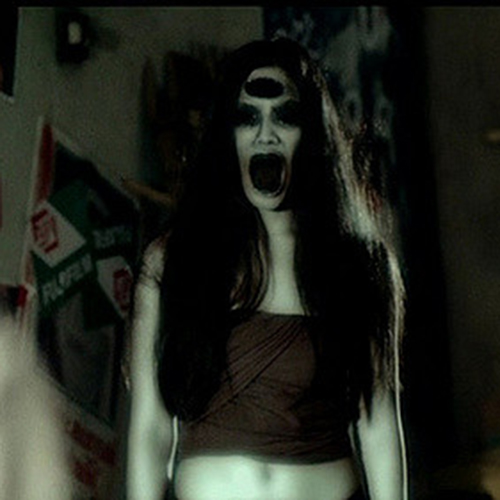There are hidden gems of all sorts in this world, from underground bagel joints to hole-in-the-wall consignment shops to rooftop stargazing parties. The sixth annual International Studies Horror Film Fest is no exception to this hidden gem phenomenon–although at any one time there were hardly ten people comprising the peanut gallery, the time I spent in the Hatcher Library this Halloween was far more magical than, say, a packed football game or waiting in a mile-long line to get into the club. There’s just something special about gathering with a group of strangers to watch spooky movies nobody’s ever heard of.
The first movie, Little Otik, was one of the weirdest things I’ve ever seen. It lies somewhere between directors Tim Burton and Jean-Pierre Jennet, like if the characters of Beetlejuice and Delicatessen had a love child. Between the extremely up-close shots of people sloppily eating soup and disturbing stop motion animation scenes, this film holds everything I love about some of my favorite movies. The translation of the 19th century traditional fairy tale “Otesanek” into modern-day surrealism is a far better alternative to the diluted brothers Grimm stories we are saddled with in the US.
Plus, little treasures like this:
I have to say, the other movies were not as good. What We Do In The Shadows was framed as a “documentary” on a group of “vampires” living together in an old, dusty house. The next line you might expect me to write is “hilarity ensues,” but what actually ensues is 87 minutes of the stale side of campy–there were a few hearty laughs from the audience, but the whole thing seemed like a rejected MTV movie script that New Zealand fished out of the trash. Yet somehow, the part of me that cannot let go of a love for Napoleon Dynamite and Crossroads (you know, the Britney Spears movie) had me laughing on the inside too.
Ghost of Mae Nak, which was released in 2005, really looks like it’s from 2005. The entire movie looks like someone applied a bad filter on it, not to mention the marginal special effects. I must say, though, that Mak and Nak’s relationship was exceptionally cute, and of course I gobbled the melodrama of Mak’s coma right up, being the dramatic fool I am. However, the title character did nothing but pull the same “scary” face and scream at people. I feel they could have been a little more creative with this.
Finally, there was Go Goa Gone, a self-proclaimed “zomcom.” This went exactly as you might imagine it would: it was a spoofy husk of a bona fide horror movie that relied on moderate gore to retain its classification within the genre. The zombie makeup and action scenes were certainly nothing to scoff at, if a bit repetitive. Though I’m generally not a hardcore fan of zombie movies, I do believe they have the potential to be high-quality contributions to the world of film. Train To Busan, for example, had a rich and heartwrenching storyline. Go Goa Gone may have been able to boast this if it had not gone so directly down the comedic route.
I understand the difficulty of choosing the perfect lineup for a Halloween film fest. Too many hours of intensity and violence can exhaust even the hardest psychopaths amongst us. However, none of these movies were actually scary, even for someone who is definitely affected by the Goosebumps TV series (I’m talking about myself here). Turning off the room’s lights could have helped, and maybe a paper skeleton or two to serve as decorations on the otherwise bare walls. While there were good parts to the movie showing (including our wonderful host), there is room for improvement. I have no doubt that the seventh annual film fest will knock the socks off of everyone in attendance!













